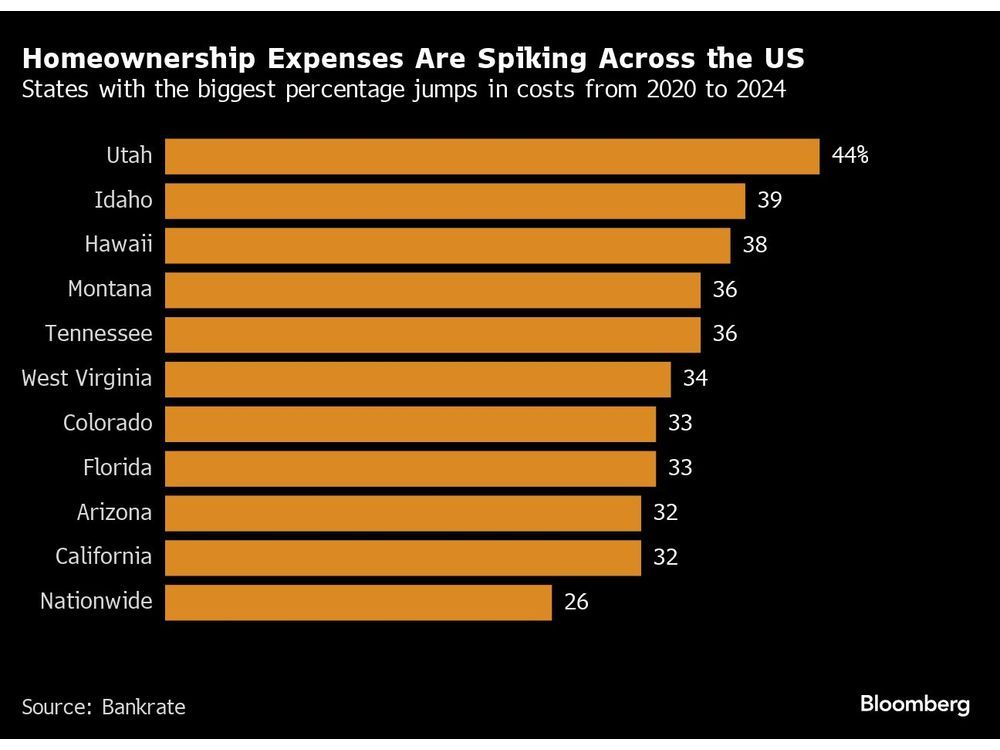
Article content
(Bloomberg) — The cost of owning a home in the US has increased 26% since 2020, as expenses including taxes, insurance and utilities all soared during a period of high inflation across the economy.
The average annual outlay for owning and maintaining a typical single-family home — not including mortgage payments — totaled $18,118 in March, the personal finance website Bankrate found. That works out to $1,510 a month more than four years earlier, when pandemic lockdowns began.
Article content
The calculation is based on Redfin’s March median sales price of $436,291.
“It was really eye-opening to see just how much it costs to maintain a home,” said Jeff Ostrowski, an analyst at Bankrate. “Until you own a house, it doesn’t dawn on you how much money you’re throwing into the house every month and year.”
In its analysis, Bankrate factored in property taxes, home insurance, energy costs, internet and cable bills, and 2% of the sales price for maintenance — expenses many buyers tend to underestimate.
Home maintenance accounted for the largest share of ownership costs in Bankrate’s findings, so states where purchase prices rose dramatically through the pandemic saw bigger percentage jumps in overall outlays. Property levies were the second-largest piece of the equation in high-tax states such as New Jersey and Connecticut. In others, energy bills came in second.
The past four years of inflation dealt the biggest blow to homeowners in Utah, where expenses surged 44%. Idaho was next at 39%, followed by Hawaii at 38%. Alaska and Texas saw the smallest increases, with costs rising 14%. Annual tallies varied widely, from $11,559 in Kentucky to $29,015 in Hawaii.
Ostrowski said the totals in some cases may be overstated, especially for owners of newly built homes that don’t need repairs, but that they’re still helpful for buyers to keep in mind.
“It’s certainly better to be over-prepared and have some extra money sitting in a high-yield savings account,” he said, “as opposed to under-prepared and scrambling.”
Share this article in your social network